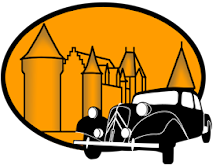The soil here is more often than not made up of a high percentage of degraded limestone (calcium carbonate) and is neutral to somewhat alkaline (aka basic). Pelouse is specifically those areas of (usually) dry calcareous grassland covered with low growing (up to 25cm) sun loving, mostly herbaceous, plants, possibly grazed by sheep or goats, either currently or in the past. Ideally it is cut once a year for hay to maintain the traditional mix of plants, but increasingly it is being abandoned and scrub is allowed to take over.
The flatter calcareous land has mostly been ploughed up and is now managed for cultivated cereals and other crops. The remaining natural calcareous grassland is now mostly restricted to roadsides and the steeper slopes of limestone ridges. These sites are particularly rich in orchids, other flora and insect species. A number of species are restricted to this habitat eg Adonis Blue Polyommatus bellargus, Pearly Heath Coenonympha arcania, Lulworth Skipper Thymelicus acteon, Green-underside Blue Glaucopsyche alexis, Marsh Fritillary Euphydryas aurinia butterflies, Crested Cow-wheat Melampyrum cristatum, Field Cow-wheat M. arvense, Cut-leaf Selfheal Prunella laciniata, Thyme Thymus spp, Horseshoe Vetch Hippocrepis comosa, Globularia Globularia vulgaris, Oxtongue Broomrape Orobanche picridis, Carduncellus Carduncellus mitissimus, Large Blue Alkanet Anchusa italica.
Notable calcareous grasslands can be found along the banks of the Vienne near its confluence with the Loire, not far from Chinon; the Cher valley between Noyers sur Cher and Selles sur Cher; the Anglin valley between Mérigny and Rives and the southern side of the Cher valley near Bléré, but there are innumerable pockets of calcareous grassland throughout the area.
 |
| A small pelouse nature reserve in Angles sur l'Anglin, known as Derrière la queue du renard. This photo was taken in October, but visit in May to see 15 species of orchids in flower and the very rare Wild Paeony Paeonia mascula. |







No comments:
Post a Comment